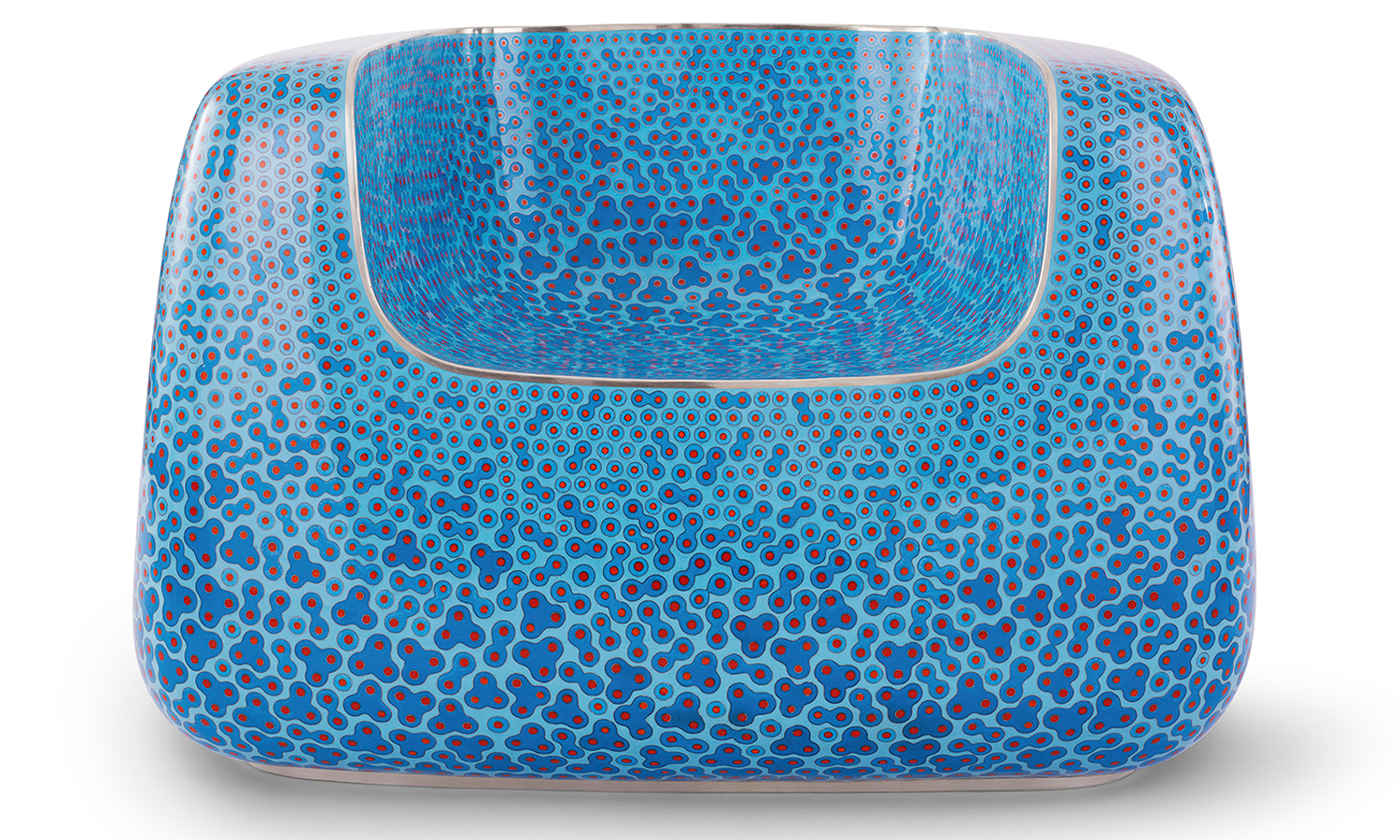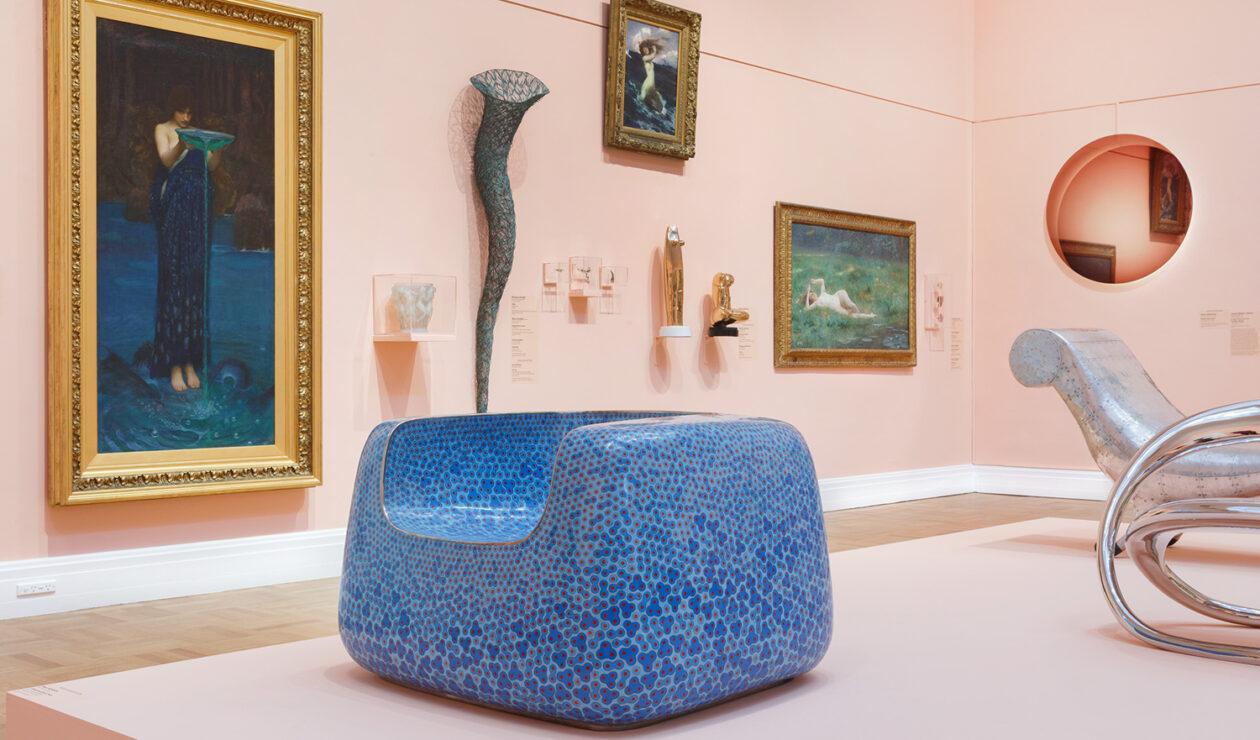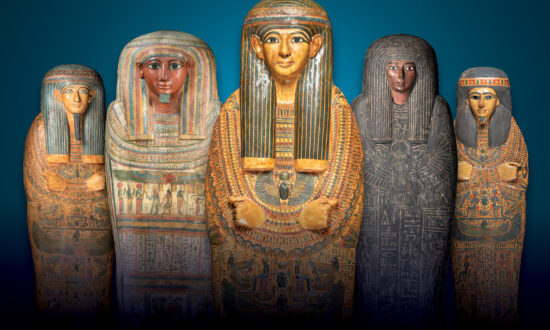Marc Newson is without a doubt Australia’s most successful designer. Based in Europe since the early 1990s, he is perhaps best known for his iconic “Lockheed Lounge” design. An edition of 10, this iconic design became the “world’s most expensive design object” by a living designer after an edition sold for a record £2,434,500 at Philips in London in 2015.
The Art Gallery of South Australia is fortunate to hold an early example of Newson’s work – the LC-1 chaise lounge, an iteration of the “Lockheed Lounge” form. This work was purchased in 1986 from the exhibition Seating for Six at Roslyn Oxley Gallery in Sydney.
The LC-1 features a chaise lounge form with a scroll neck, a nod to neoclassical style, and its body is formed of riveted aluminium panels, referencing the exterior of mid-20th century fighter bombers. This work is a tour de force of contemporary design and has delighted gallery audiences for decades.
Since the late 1980s, Newson has developed a highly successful international career over four decades, working across a range of disciplines designing for major international fashion, homewares, automotive and aviation brands and firms. He has designed everything from luxury handbags to aeroplane suites, cars, weapons, watches, shoes, lighting and even a toilet!
Thirty-seven years after the acquisition of the LC-1, AGSA recently acquired our second work by Newson: Cloisonné Blue Chair, 2017. This work is from a body of furniture (2017-) designed by Newson which utilises the metalwork technique of cloisonné.
Cloisonné is a labour-intensive enamelling technique employing different-coloured vitreous enamel held in place or separated by strips of metal wire which is then multi-kiln fired. This technique dates to the ancient world and is perhaps most famously known in the context of decorative arts produced in East Asia. Traditional cloisonné is typified by bold colours and floral designs and normally used in jewellery and small vessels.

Marc Newson, Cloisonné Blue Chair, 2017, London (designed), Beijing (made), cloisonné enamel, copper, 66.5 x 102.1 x 94.6 cm (overall), 103 kg (weight). Courtesy of Gagosian & Marc Newson Ltd. Photo: Xiangzhe Kong
Newson’s cloisonné body of work in furniture reflects his original training as a jeweller (cloisonné is often used in jewellery). In developing this body of work, he had an ambitious idea to upscale this technique into furniture, but struggled to find workshops in China capable of producing the technique on a larger scale.
In an article published on artnet.com last year, the designer told writer Anne Sansom that the process was almost dying out: “So we had to find certain individuals who could recruit and retrain people. We built this factory and got it to a point where we could produce these crazy shapes…. There are 30 people executing steps along the way, doing the enamel and stuff. It’s a mad process.”
The interlocking blue, red, and yellow pattern for Cloisonné Blue Chair is Newson’s contemporary take on traditional cloisonné designs. Using the orgone form – a recurring open, circular, contoured motif in Newson’s practice – it is reminiscent of other chairs produced by Newson.
Newson studied jewellery design and sculpture through his fine arts degree at the University of Sydney, graduating in 1984. In 1986 he received a grant from the Australian Crafts Council to produce new work for his first solo exhibition – the Seating for Six show at Roslyn Oxley. Shortly after, he established his Sydney workshop, hand-making furniture and time pieces, and during this period produced his Super Guppy Lamp, 1987, and Embryo Chair, 1988.
Newson moved to Paris in 1991, and later to London, where he established Marc Newson Ltd. He has had held senior creative roles with Qantas Airways (2005-2015) and Apple (2014-), as well as holding an Honorary Doctorate from the Royal College of Art, London and the University of Sydney. His work is now held in most major design museums across the world.
Cloisonné Blue Chair can be seen alongside the LC-1 chaise lounge, as well as other recent acquisitions, in Gallery 16 of AGSA in a new collection display titled Metamorphosis.
Metamorphosis combines the work of Australian artists, including First Nations artists, alongside their international peers, and includes sculpture, ceramics, painting, installation, furniture, jewellery and much more.

Get InReview in your inbox – free each Saturday. Local arts and culture – covered.
Thanks for signing up to the InReview newsletter.
Rebecca Evans is curator of Decorative Arts & Design at the Art Gallery of South Australia. This article is part of InReview’s Off the Wall series, in which AGSA curators offer an insight into specific works or displays at the gallery.
Support local arts journalism
Your support will help us continue the important work of InReview in publishing free professional journalism that celebrates, interrogates and amplifies arts and culture in South Australia.
Donate Here




